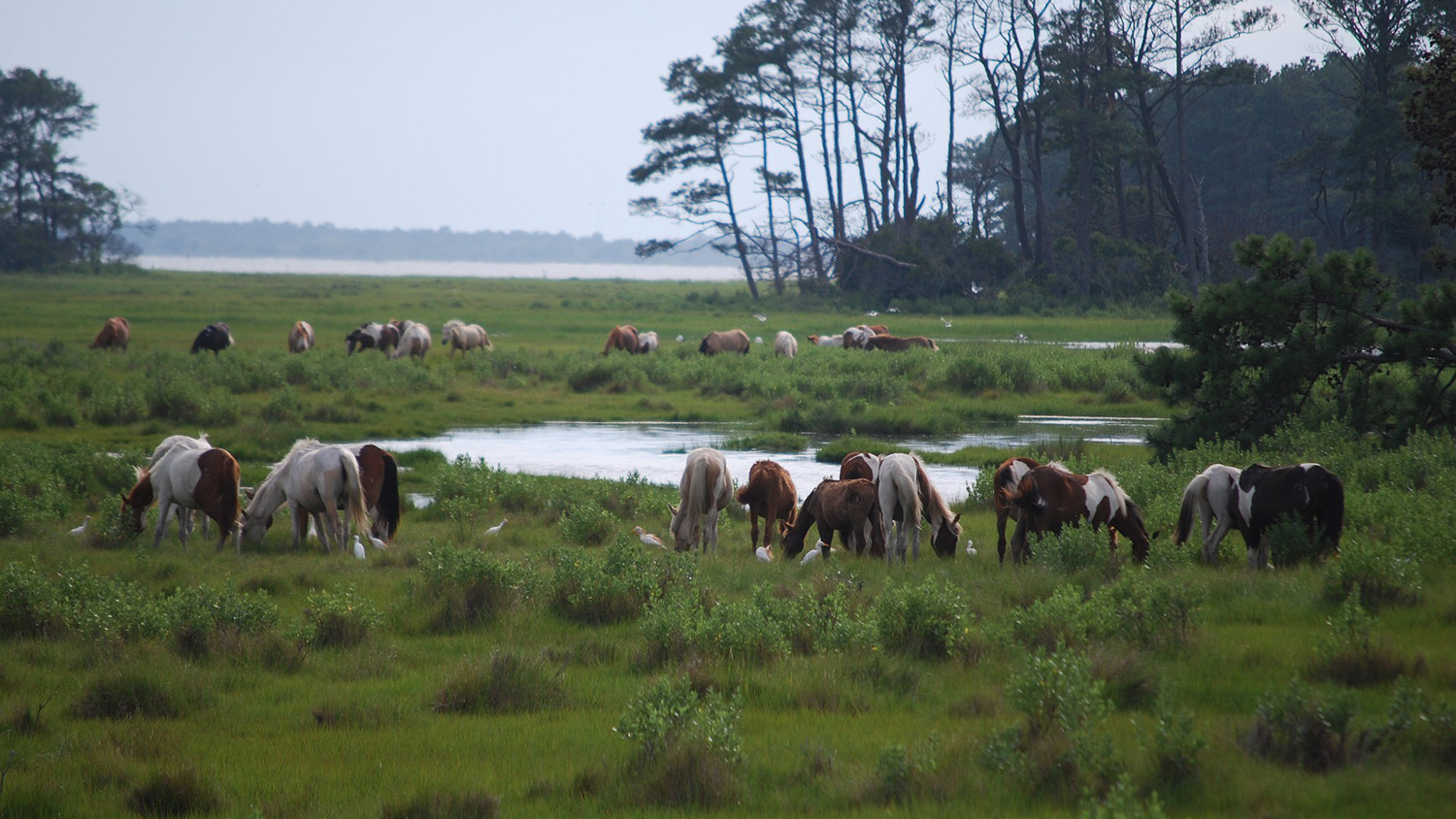For Immediate Release
Researchers from North Carolina State University have created a model that can identify potential hot spots for the pathogen Pythium insidiosum in the Chincoteague National Wildlife Refuge, home to the wild Chincoteague ponies.
P. insidiosum is an aquatic, fungus-like pathogen that thrives in standing water and is commonly found in tropical or subtropical environments. In horses it causes pythiosis, or swamp cancer, a fatal infection which often affects the skin or gastrointestinal tracts of the animals.
“Instances of pythiosis in North America are increasing, so it is important to figure out what types of environments are more favorable to the pathogen,” says Gustavo Machado, assistant professor of population health and pathobiology and corresponding author of the research. “Recent cases in the Chincoteague Refuge gave us an opportunity to discover the distribution and persistence of P. insidiosum in this environment.”
The Chincoteague pony is a unique breed of wild horse that lives on Assateague Island, on the Virginia/Maryland border. In the past three years, 12 of the horses have been infected with P. insidiosum and developed pythiosis.
Transmission routes for pythiosis are still not well understood. Machado and colleagues from the U.S. Fish and Wildlife Service and the University of Florida took environmental samples from 136 sites on Assateague Island inside the Chincoteague Refuge. They tested the samples for evidence of the pathogen, then created a model to predict locations where it would thrive.
The model found that the most favorable months for the pathogen were during the summer – June through August – and that the pathogen was more prevalent in the northern part of Assateague Island than in the southern area.
“Pythiosis and its transmission routes are still not very well understood,” says Machado. “We do know that it has active and dormant phases. When active, it is attracted to hair and vegetation that looks like hair. Ponds can be perfect habitats for this pathogen: shade, clear water, appropriate vegetation, and mammalian hosts.
“Hopefully this model will help caretakers manage the horses in ways that can reduce their exposure to this pathogen.”
The research appears in Frontiers in Veterinary Science and was supported by the U.S. Fish and Wildlife Service and the USDA National Institute of Food and Agriculture McIntire Stennis project (grant FLA-PLP-005562). Manuel Jara, a postdoctoral researcher at NC State, is first author. Kevin Holcomb, of the U.S. Fish and Wildlife Service, and Xuechun Wang and Erica Goss of the University of Florida, also contributed to the work.
-peake-
Note to editors: An abstract follows.
“The potential distribution of Pythium insidiosum in the Chincoteague National Wildlife Refuge, Virginia”
DOI: 10.3389/fvets.2021.640339
Authors: Manuel Jara, Gustavo Machado, North Carolina State University; Kevin Holcomb, U.S. Fish and Wildlife Service; Xuechun Wang, Erica Goss, University of Florida
Published: Feb. 19, 2021 in Frontiers in Veterinary Science
Abstract:
Pythium insidiosum is a widespread pathogen that causes pythiosis in mammals. Recent increase in cases reported in North America indicates a need to better understand the distribution and persistence of the pathogen in the environment. In this study, we reconstructed the distribution of P. insidiosum in the Chincoteague National Wildlife Refuge, located on Assateague Island, Virginia, and based on 136 environmental water samples, collected between June and September of 2019. The Refuge hosts two grazing areas for horses, also known as the Chincoteague Ponies. In the past 3 years, 12 horses have succumbed to infection by P. insidiosum. Using an ecological niche model framework, we estimated and mapped suitable areas for P. insidiosum throughout the Refuge. We found P. insidiosum throughout much of the study area. Our results showed significant monthly variation in the predicted suitability, where the most influential environmental predictors were land-surface water and temperature. We found that June, July, and August were the months with the highest suitability for P. insidiosum across the Refuge, while December through March were less favorable months. Likewise, significant differences in suitability were observed between the two grazing areas. The suitability map provided here could also be used to make management decisions, such as monitoring horses for lesions during high risk months.
- Categories:



